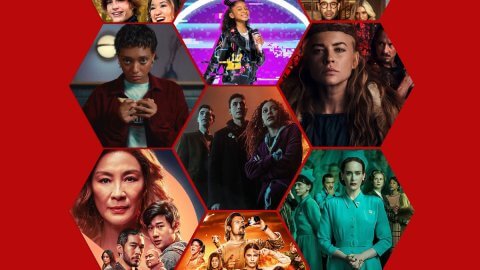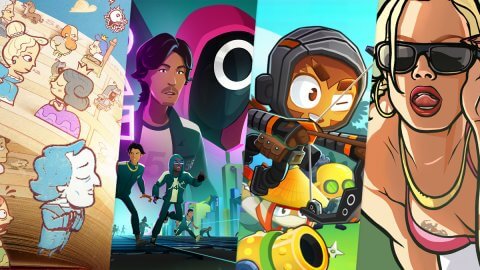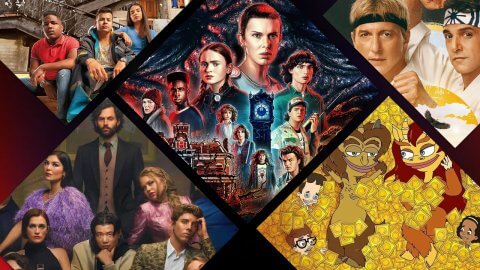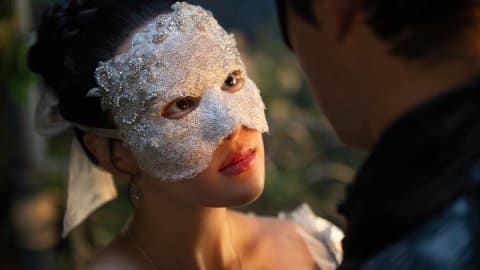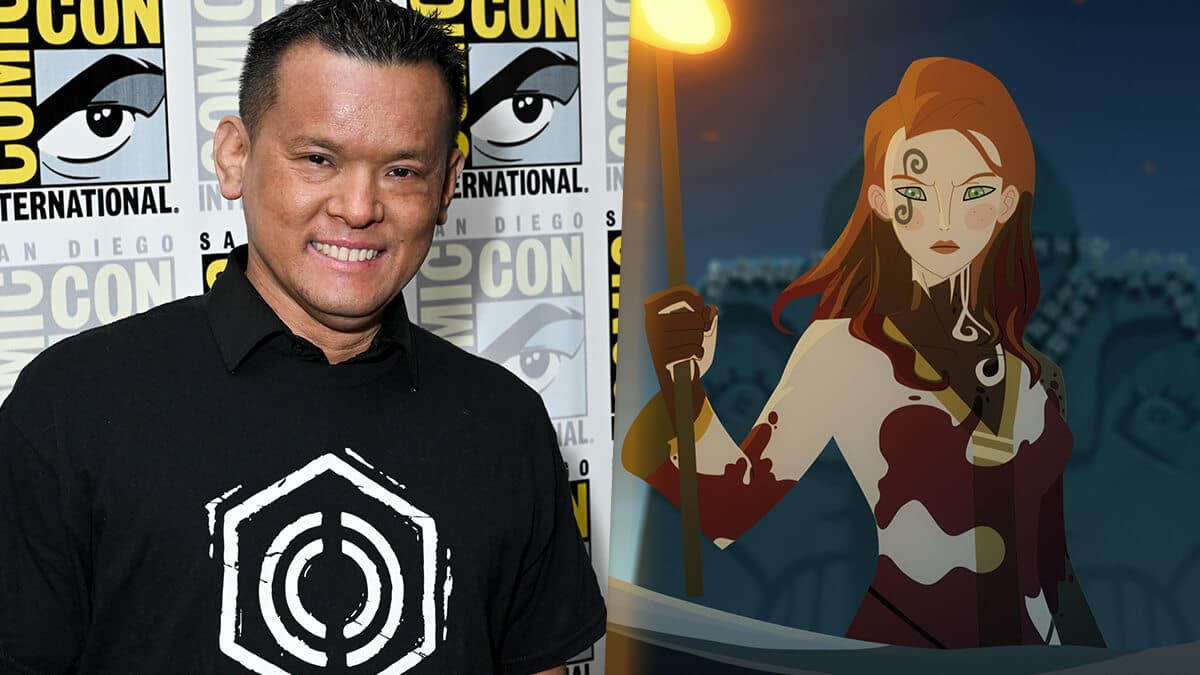
Picture: Getty Images / Netflix
In this deep-dive interview, we chatted with Twilight of the Gods writer Jay Oliva (Batman: The Dark Knight Returns) about his experience working on Netflix’s spectacular new vision of Norse Mythology.
Created by Zack Snyder, Jay Oliva, and Eric Carrasco, the Norse Mythology-inspired series follows Sigrid (Sylvia Hoeks), a battle-hardened warrior, and Leif (Stuart Martin), a mortal King. Their world is shattered when Thor unleashes his devastating fury on their wedding day. Driven by a thirst for vengeance, the duo embarks on a perilous quest alongside a team of rogues.
Read on for our interview with Jay Oliva, where he discusses his creative process, favorite characters, and more.
Note: This interview has been edited for brevity and clarity. This is a spoiler-free interview.
WoN: What drew you to work on Twilight of the Gods? Are you a big fan of Norse myth?
I’ve always had a love for mythology (Greek, Norse, Egyptian, Indian etc ) since I was a kid. I think it may have been the “Clash of the Titans” film that really sparked my interest in old gods and myths. Norse mythology, in particular, piqued my interest as a kid, and I’ve always had a love for the lore and characters in those stories.
WoN: Can you walk us through your creative process? How do you approach writing and directing, especially when dealing with mythological characters?
I was in Manila doing the writer’s summit for my first Netflix show, Trese when Netflix executive John Derdarian called me and asked, “What do you know about Norse mythology?” I wasn’t expecting to pitch the idea for Twilight of the Gods, but I just went into it and came up with the story on the spot. I based it on an intriguing idea that the Christian Missionaries converted the Vikings not by saying that their gods were not real; they convinced the Vikings that Ragnarok did indeed happen, that the one true god fought in that great battle and that a man and a woman also survived. The time we live in now is the aftermath of Ragnarok, and we are all descendants of that original couple that survived and fought alongside the gods during Ragnarok: Adam and Eve.
I’m paraphrasing, of course, but this idea was really interesting to me as a filmmaker. I wanted to tell the story of these two humans and the world that ended around them during Ragnarok, the death of the Norse gods.
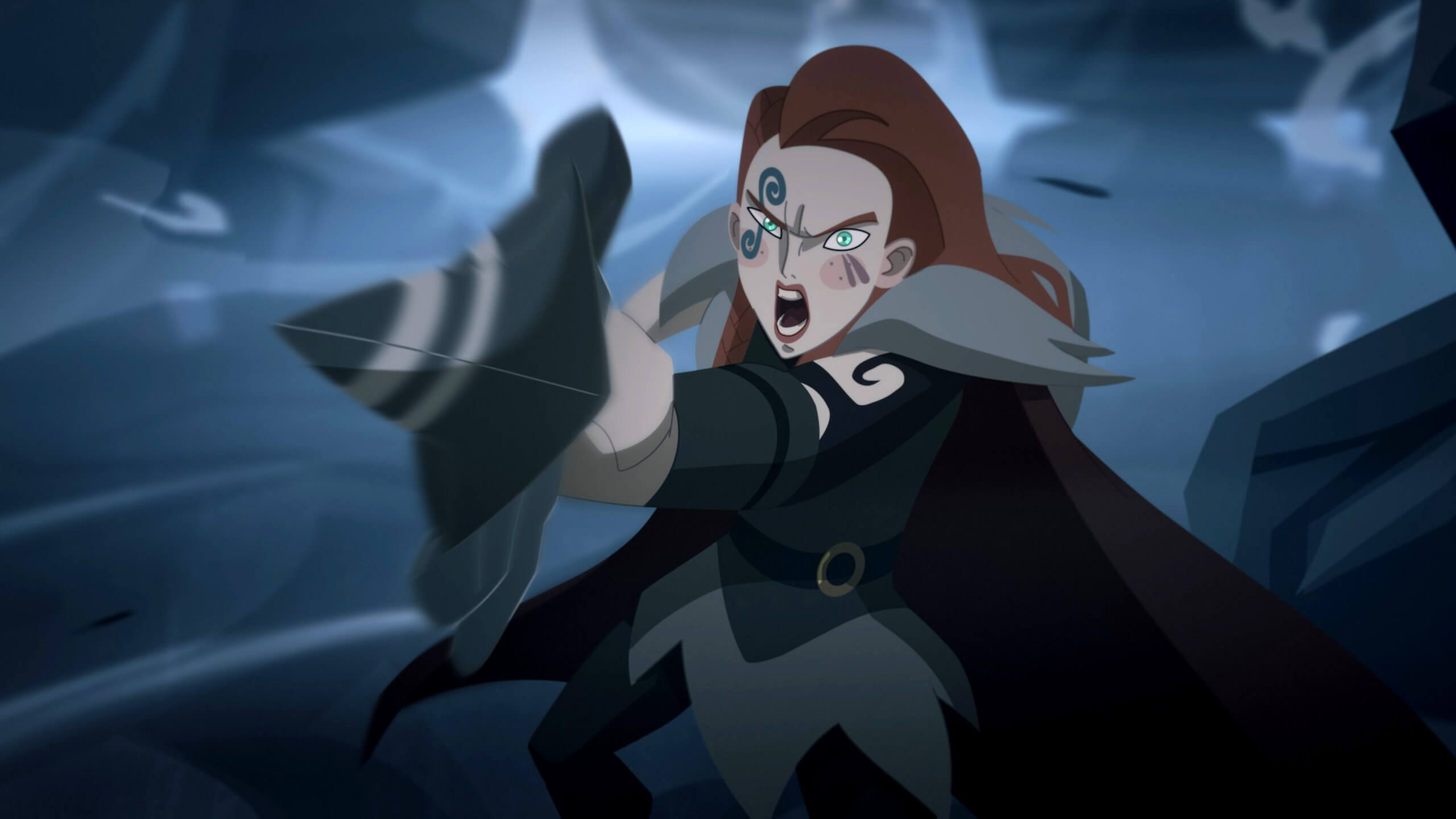
Cr. COURTESY OF NETFLIX © 2024
Netflix apparently loved the idea and wanted to make it. They asked me if I wanted to do it with Zack Snyder since he and I had collaborated in the past, and I was looking for an animation project he and I could work on together since I had helped him out on the live-action film side. I pitched it to Zack, and we developed it further. Later, we brought in Eric Carrasco as head writer, who would eventually write the scripts along with his writing team.
My writing process is simple: I figure out how a story ends first. If your ending isn’t strong or inspiring, then you have nothing to build up the story to. After that, I start at the beginning, so I have a clear goalpost to hit as I work my way forward in every episode. At this point, I’ll bring in writers to help flesh out the story more. At its core, I wanted Twilight of the Gods to be a love story. I didn’t want the human element of love and loyalty lost in this bombastic tale of revenge in a backdrop of gods and monsters.
WoN: How did you approach blending Norse mythology with your own creative vision?
Norse mythology is already perfect for adaptation due to the over-the-top characters and stories throughout the myths. The approach I wanted to focus on was how humans fit into this fantastical world and how insignificant one must feel next to these Norse gods. I wanted to tell a tale where mankind wasn’t the apex being on the earth. That they were a “lesser” race compared to these beings who walked amongst them and who often disregarded human life as meaningless and trifling. How could love survive in this very harsh world? Especially when love is blinded by pure, unadulterated vengeance. That was the core story I wanted to focus on, and that would ultimately lead to the events of Ragnarok.
WoN: The Norse Gods are ubiquitous in pop culture nowadays. How did you and the team approach the characterization of iconic Norse Gods like Thor and Loki to make them feel fresh yet true to their mythological roots?
We went back to the source material. We based it more on who/what Thor was in the original text and, of course, dramatized him to the nth degree. What I always thought was interesting about the original texts is that Loki and Odin were good friends and often traveled together in many stories. I always thought that this was something that wasn’t really explored in most recent incarnations of Norse mythology.
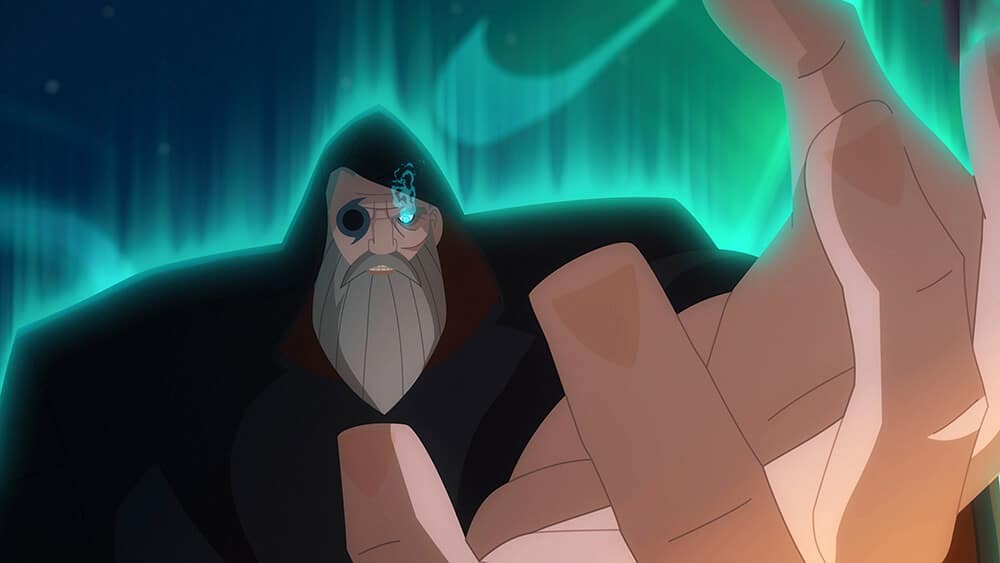
Cr. COURTESY OF NETFLIX © 2024
WoN: Talk us through the collaborative process of working on the show alongside Zack Snyder and Eric Carrasco — how did you work together to develop the show?
I briefly mentioned it above, but in addition to how we all started, Eric, Zack, and I would sit together and discuss the series as a whole. Eric would write out a breakdown summary of each episode based on what we all had agreed upon. Then, Zack and I would add our notes and then Eric would then hand it off to his writing team or write it himself. Eric and I were in constant contact, and he would often ask me some details I had mentioned in the original pitch to Netflix, and he would then find a way to weave that into the episodes.
Zack and I often focussed on the story’s broad strokes, and Eric and his team would fine-tune it. It was a great collaboration to see my original story evolve into what Twilight became.
WoN: Do you have any favorite characters from the series? Which one was the most enjoyable to write?
Leif and Sigrid were always my favorites. Their story of love, loss, and redemption was what I originally pitched, and I fell in love with it from the beginning. So it’s hard to pick anyone else. But outside of them, I’d say Loki because he has the most robust character arc that isn’t very apparent. I don’t want to give any spoilers, but Loki is the linchpin of the series.
WoN: I’ve been a huge fan of your work for a while now. Your extensive work in animation is amazing. What about animation specifically draws you in?
I’ve always loved animation, and my artistic ability has led me down this wonderful path, but honestly, the thing I love the most is the storytelling/ filmmaking part. Animation is just another medium to tell a story. Many of the stories I’ve been fortunate to be a part of have been these larger-than-life fantastical, supernatural, sci-fi, comic-book worlds that animation does so well to translate.
I love telling stories that move people, and right now, animation is the only medium that has allowed me to tell stories that are near and dear to me. When I first started, animation from the West was still considered cartoons and for kids. A lot of the things I wanted to do were more suited for live-action, but over the years, things have shifted to a much more live-action way of filmmaking. That’s how I direct my films. At its core is the heart of the story, and whether it’s animation or live-action, it doesn’t matter to me as long as the audience experiences the emotions I want to get across in a story that hopefully touches them in a profound way.
WoN: From Batman: The Dark Knight Returns to Justice League, you’re known for directing some of the best battles in animation. How did you go about choreographing action sequences in the mythological setting of Twilight of the Gods, a show that’s so brutal?
I always approach my fight choreography as a highly planned and executed dance. With Batman, I based all of his moves on gymnastics and martial arts, so they are grounded in real-world moves. For Twilight, I wanted to keep the choreography grounded, but since we are in this mythical setting, we did go a little over the top!
I wanted to show that these Norse heroes could keep up with some of the Gods. I took a page from Tolkien regarding how powerful the main characters are because they were the best examples of man, god, and monster in this world.
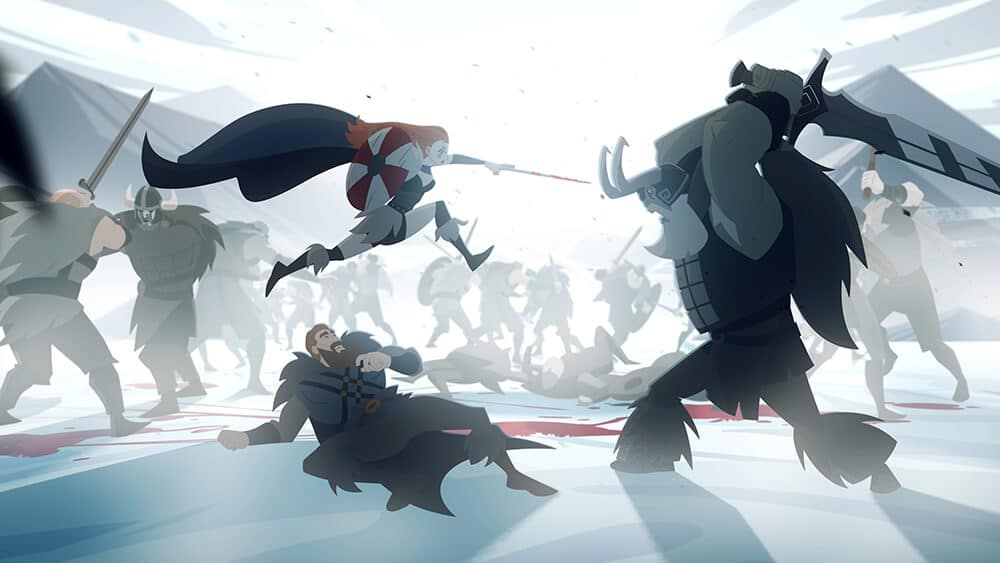
Cr. COURTESY OF NETFLIX © 2024
The main heroes’ martial prowess is unmatched, but they pale in comparison to the scary and raw power of the gods like Thor. The Vikings lived in a harsh and brutal world, and we wanted to translate that with over-the-top violence and choreography. It’s like a fairy tale turned nightmare on steroids!
WoN: Outside of Twilight of the Gods, do you have any other projects coming up that you want to share?
Currently, my studio and I are working on “INFINITY: Paradise Lost,” an animated series based on the popular tabletop game by Corvus Belli. We are also adapting the NY Times bestselling book series “Cradle” by Will Wight into an animated series. My studio and I are also planning on a few live-action projects that I will be helming, which I hope to announce very soon!
Of course, we are eagerly waiting to work on Twilight Season 2!
We thank Jay Oliva for taking the time to talk to us. Twilight of the Gods premieres September 19.

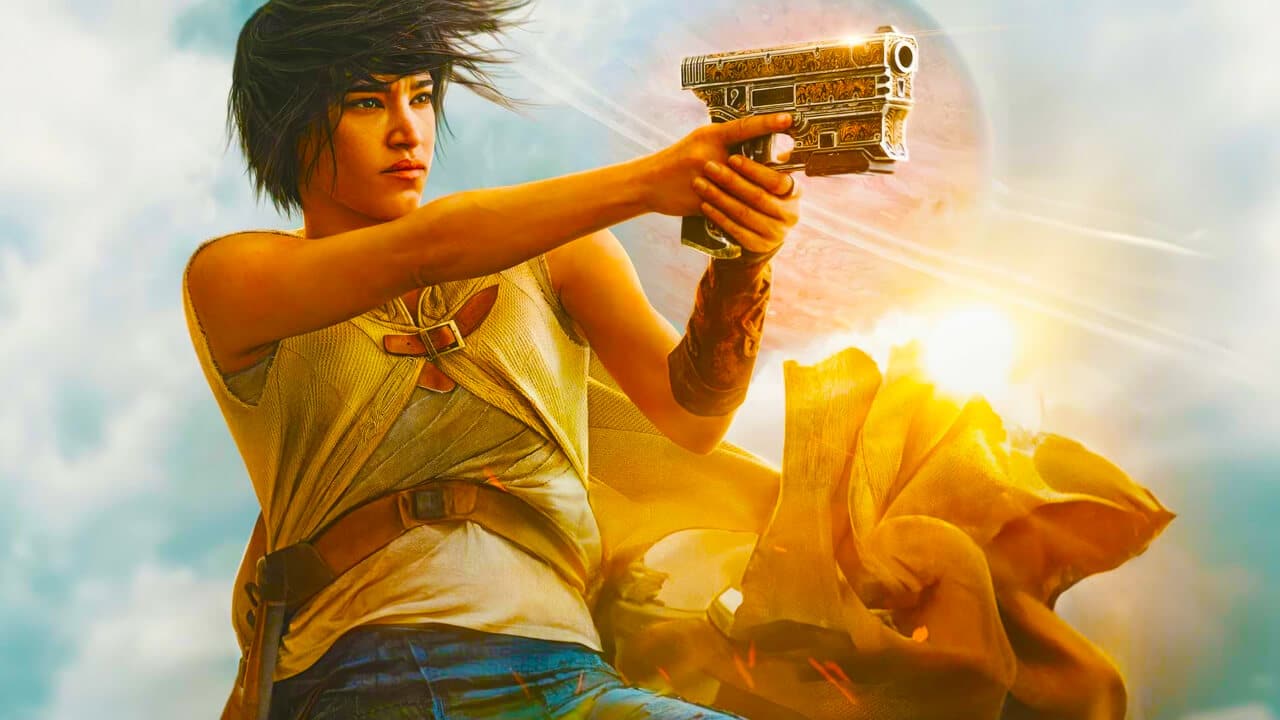
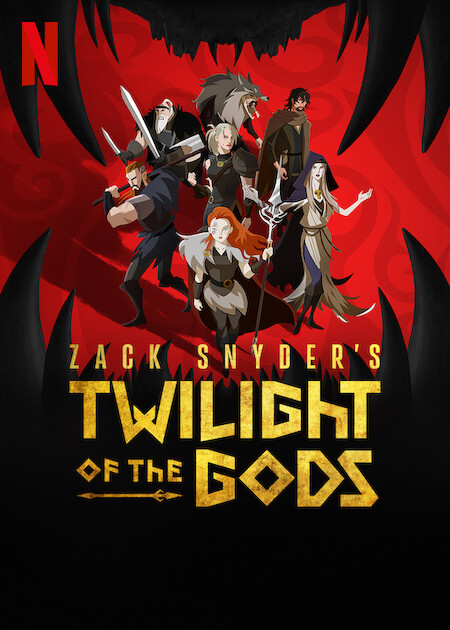 Rating: TV-MA
Rating: TV-MA